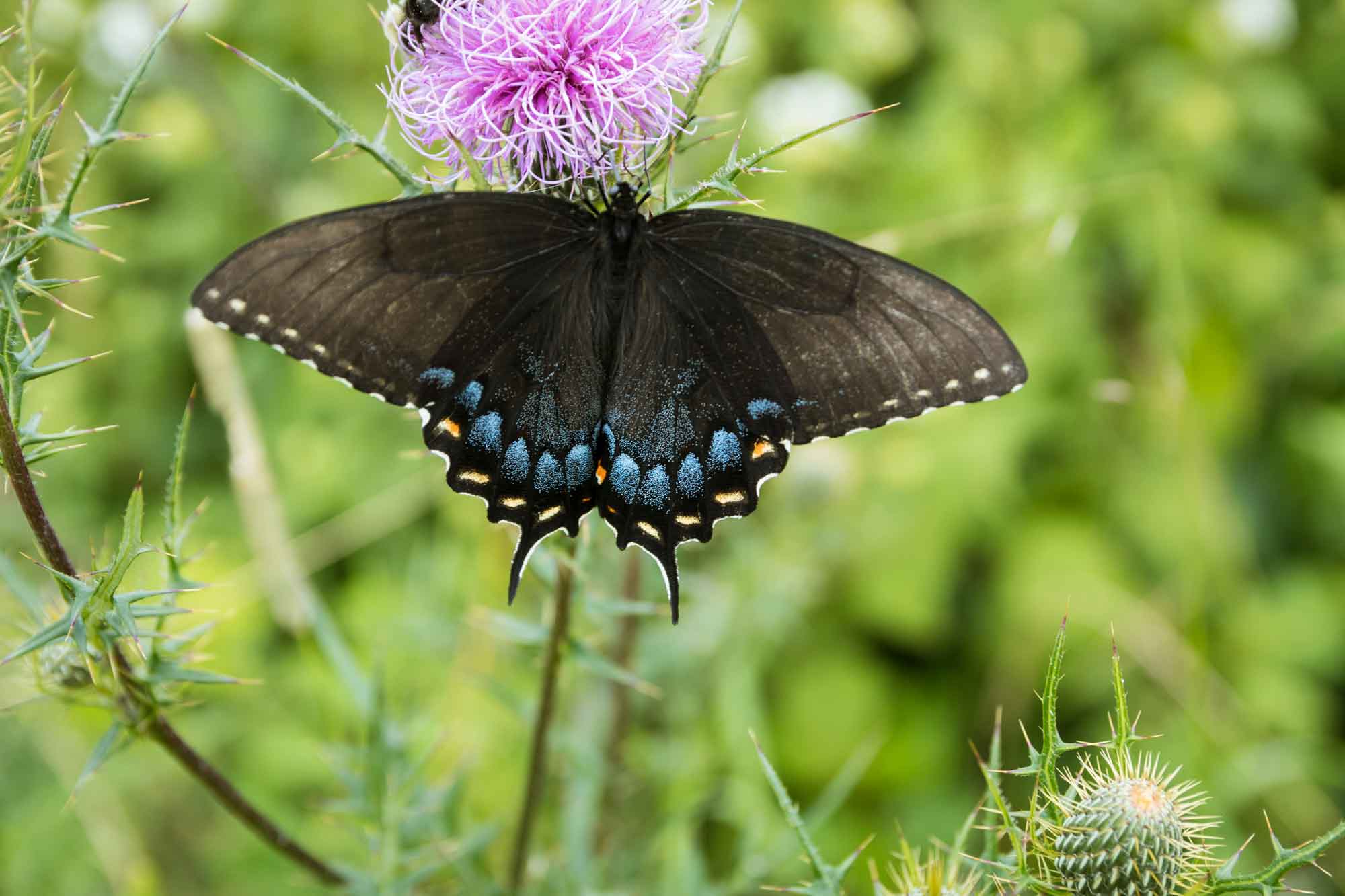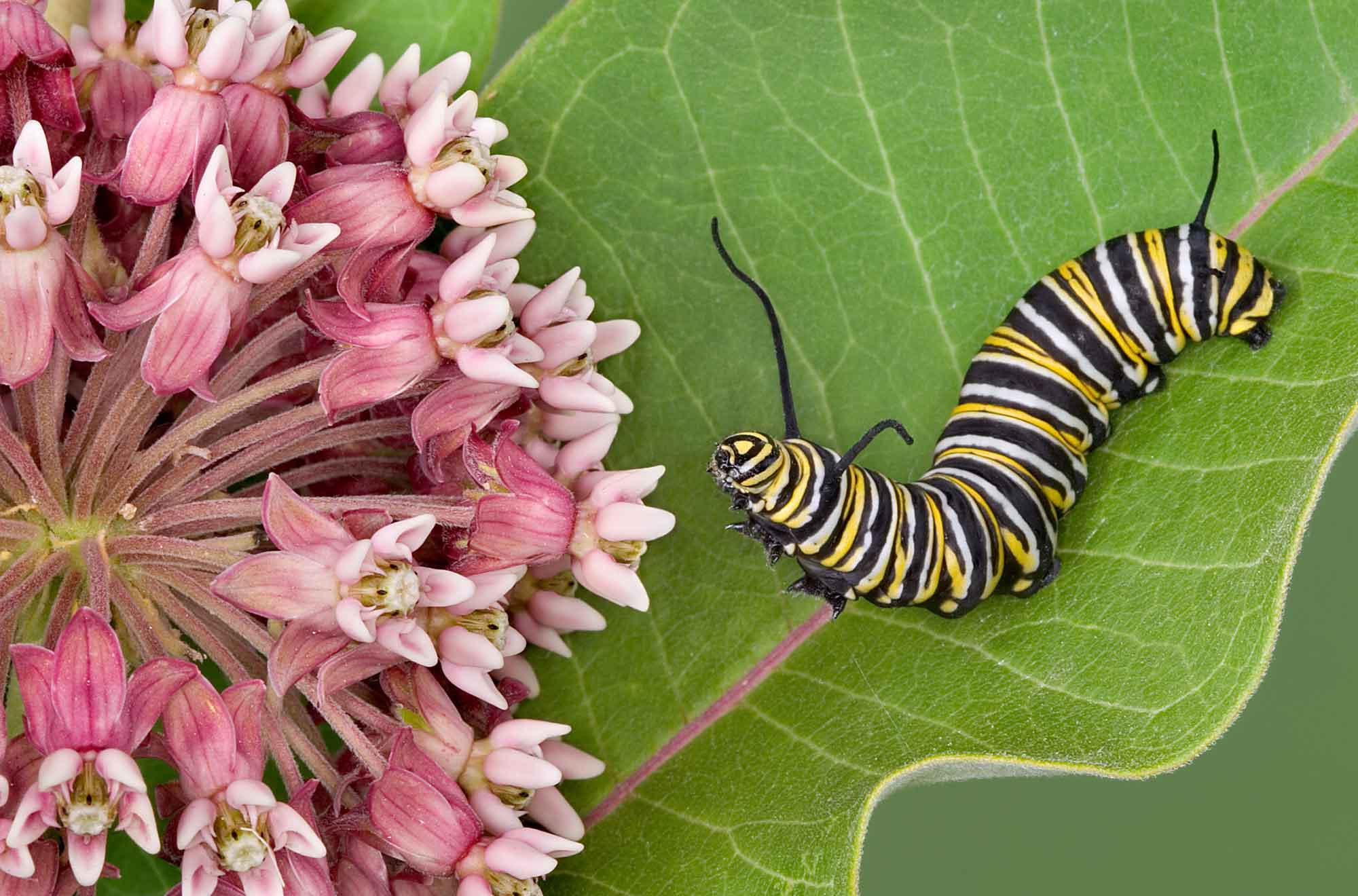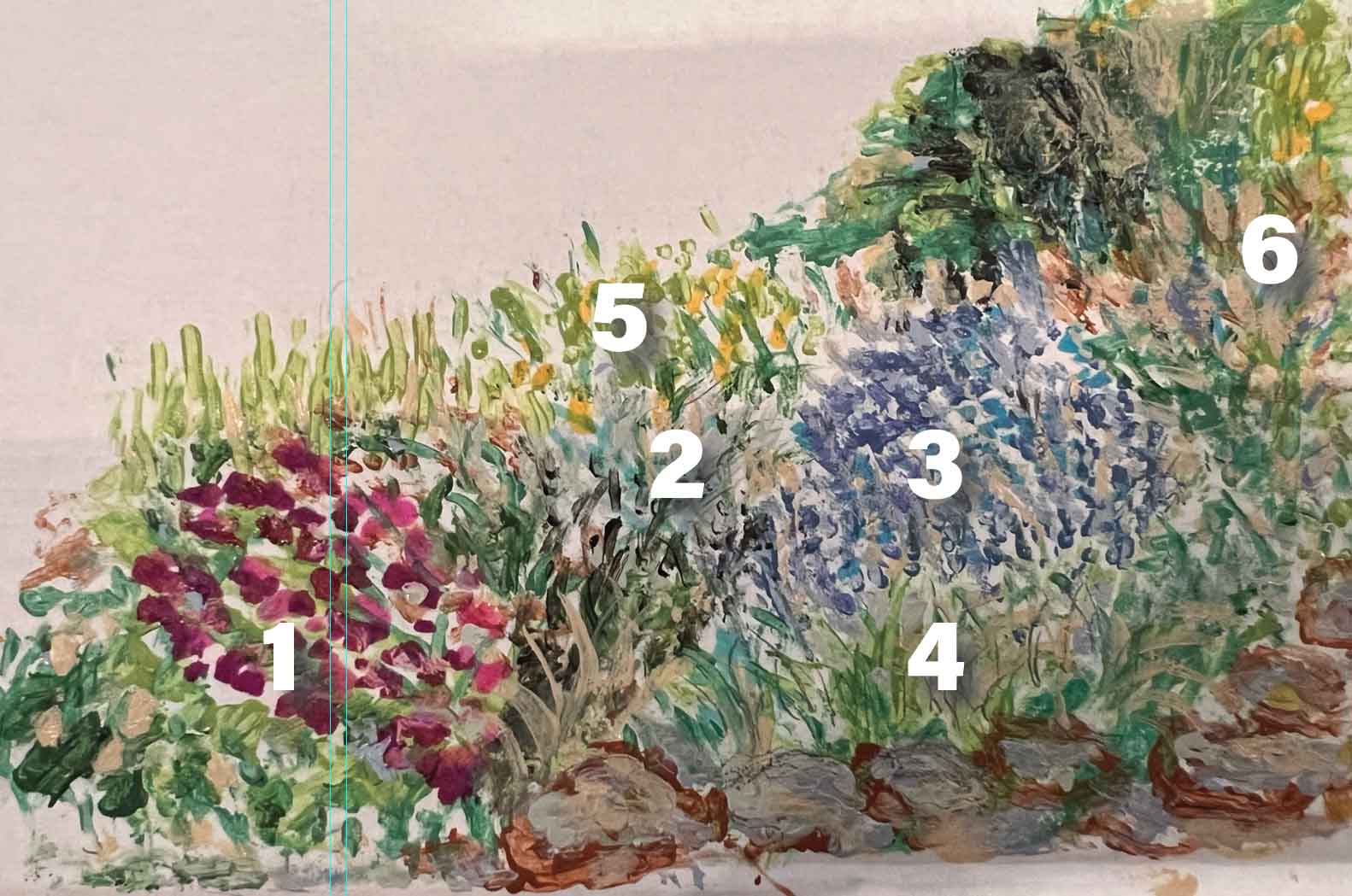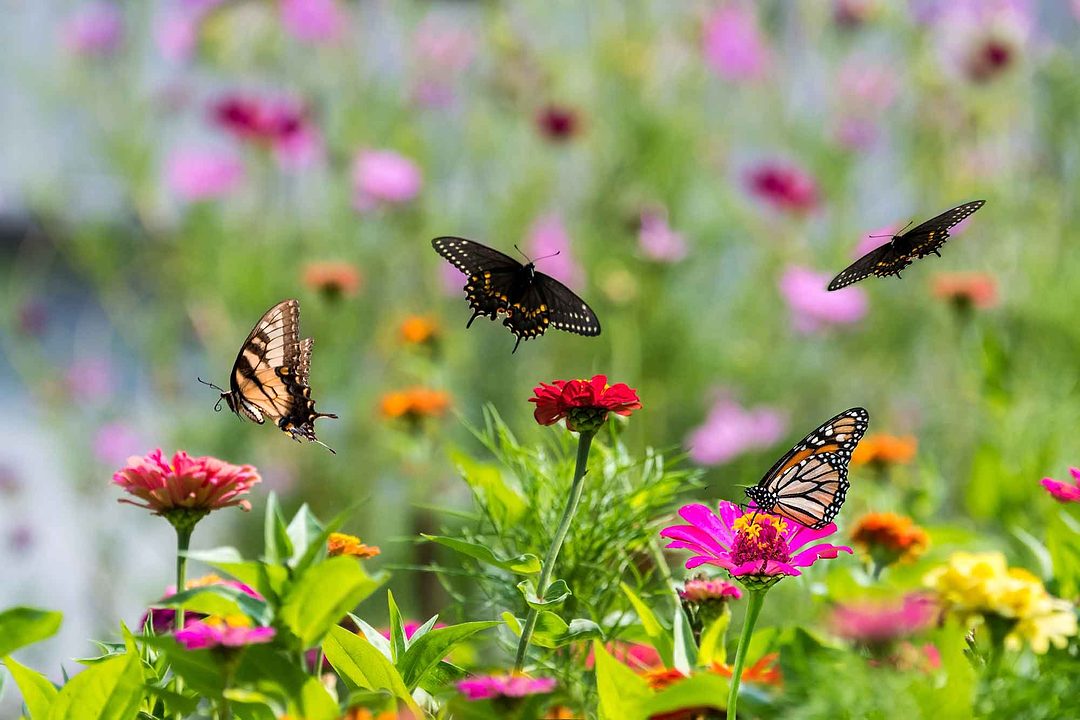When I was very young, our home backed to a wooded area. Those were the days when children were allowed to roam fairly unfettered. Perhaps it was just as dangerous as it is today, but nobody knew it was. I loved wandering through this small woodland picking up sticks and rocks and all sorts of wonderful things. One day I happened upon what I now know is a “kaleidoscope” of Monarch butterflies (Danaus plexippus). In other words, a swarm of those wonderful, brilliant butterflies enjoying a puddle. Yes, butterflies do “puddle,” or gather in large numbers to feed. And for that matter, Monarchs also “roost.”
All of these words I didn’t know as a child. All I knew was that I thought I had truly found a magic place. A home in the woods for the butterflies. Of course, the next day when I went back, they were gone, but the memory stayed with me. Later, as part of our city’s Master Gardener program, I was lucky enough to volunteer at our local Butterfly House (which is where I picked up those wonderful, descriptive words “kaleidoscope, puddle, and roost,” as well as the term Lepidopterans).
 ©shutterstock.com
©shutterstock.com The order Lepidoptera includes all butterflies, moths, and skippers. There are about 180,000 known species of Lepidoptera, most of which are moths. In fact, butterflies constitute only 8%, or about 14,500 species of the Lepidoptera. All have complete metamorphosis, with egg, larva, pupa, and adult stages. But enough science talk. Back to my butterfly quest.
I was volunteering at the Butterfly House and loving it, when it occurred to me that perhaps I could entice more butterflies (or flutterbys, as I insisted on calling them as a child) to my own backyard. But how to do it? Would it work? Would it be of any benefit to what we have heard is the disappearance of the butterflies’ natural habitats. Yes, to all of that! My research revealed that it isn’t as simple as planting a bunch of milkweed in your backyard and waiting for the butterflies. A butterfly garden should provide sustenance for butterflies throughout their life cycle; thus a good butterfly garden plan will include foliage and blooms throughout the spring to fall seasons.
Perhaps begin your plan with the 4 “S’s”: Sun, Soil, Shade, and Shelter.
SUN and SOIL: The first requirement is sunlight. Butterflies are cold blooded, so they seek out warmth. That means five to six hours of full sun each day. Once you have selected your spot, check your soil. Dry or wet, sandy or rich? You can adjust which plants you choose, but you can’t change the sun and soil.
SHADE and SHELTER: While butterflies need warmth and sunlight, they also need a place to roost and shelter. Trees or shrubs near the garden (but which don’t shade it) and even some large rocks on which they can find additional warmth will be attractive to the butterflies. Most importantly, the caterpillars who will become our lovely “flutterbys” will need food and shelter as well.
Other considerations include WATER and WIND. While butterflies will be enjoying the local nectar and sap, a water and nutrition station (a “puddling” station) where they can find much needed minerals and nutrients is as simple as a shallow dish of water with a mixture of sand and soil, and a few rocks on which they can rest. Butterflies are fragile, and do not fly in wind and rain. Native grasses and shrubs give them a place to hide from the elements.
PLANTS: Different species of butterflies gravitate to different plants. We tend to focus on blossoms, but butterfly gardeners sometimes include herbs such as the common chive (Allium schoenoprasum). Chives bloom in late spring and are very attractive to butterflies (and are great in your summer salads). Other butterfly-attracting herbs include dill, parsley, (good host plants for the Black Swallowtail’s caterpillar) mint, and lavender.
 ©shutterstock.com
©shutterstock.com Of course, most of us know that the brilliantly colored Monarch loves milkweed, and the two very productive and easy-to-grow milkweed plants in Massachusetts are Common Milkweed (Asclepias syriaca) and Marsh, sometimes called Swamp, Milkweed (Asclepias incarnata). The appropriately named Butterfly Weed (Aesciepias tuberosa) attracts most species of butterflies with its bright orange blossoms. Don’t confuse Butterfly Weed with Butterfly Bush (Buddleia), though. Buddleia has attractive blooms but lacks nutritional value for the butterflies. Other easy to grow favorites are Spotted Cranesbill (Geranium maculata), Coneflower (Echinacea purpurea), Blazing Star (Liatris spicata), and Hyssop, or Hummingbird Mint (Agastache). Your butterfly garden can contain many other bloomers. And don’t get overly worried about weeds…some weeds can be wonderful host plants for caterpillars as well as shelter for your new guest butterflies. Just don’t let them crowd out your selected plants.
PLANNING YOUR GARDEN: Once you have selected your color and height plan, along with sequential bloom periods, and have identified a sunny, well drained place in your yard for your butterfly garden, it is easy to draft a simple layout plan. While some of us may like to “dot” different colors throughout a garden, butterflies are more attracted to clusters or clumps of species. If possible, place your garden near other garden plants rather than in isolation. And yes, size can matter. The more color and the more plants, the more attractive it will be to butterflies, though even a smaller space filled with bright blooms can attract and support butterflies. Speaking of size, another thought: Because our sun tends to come from the South, taller plants could be planted on the north side of your garden, so they don’t shade the shorter varieties.
Whether you purchase plants or start from seed, remember to PROTECT YOUR POLLINATORS: Remember that insecticides and herbicides can poison your butterflies, as well as other pollinators. If you plan to purchase plants rather than starting from seed, you will want to ask your nursery or plant center whether the plants you buy have been treated with insecticides. As in all gardening, seeds are less expensive, but nursery-grown plants will give you and your butterflies more immediate gratification. Remember that a significant portion of our food worldwide is made possible by pollinators, including butterflies. We love them for their beauty, but also for their contribution to the planet.
 ©Cheryl Erman
©Cheryl ErmanFor a simple, small, and low maintenance butterfly garden, here is a suggestion that would work in the Concord area:
1 Prairie Smoke (Geum triflorum) or Rose Milkweed (asclepias incarnata)
2 Maidengrass (Miscanthus sinensis ‘Gracillimus’)
3 False Indigo (Baptisia australis) or Blazing star (Liatris spicata)
4 Prairie dropseed (Sporobolus heterolepis)
5 Little Bluestem (Schizachyrium scoparium)
6 Shasta Daisy (Leucanthemum ‘Becky’)
Of course, you can always add additional annual blooming plants to enhance your garden.


